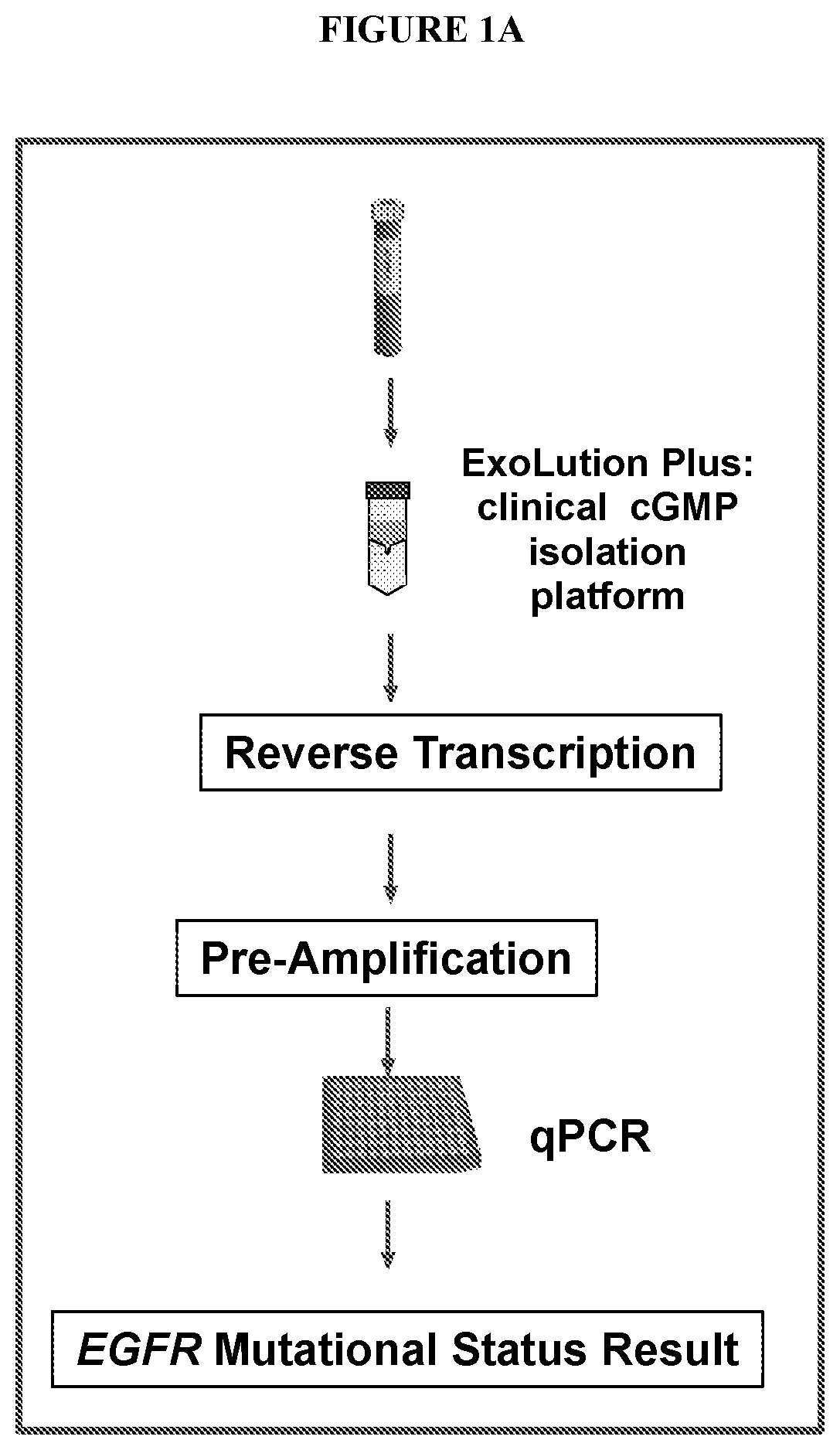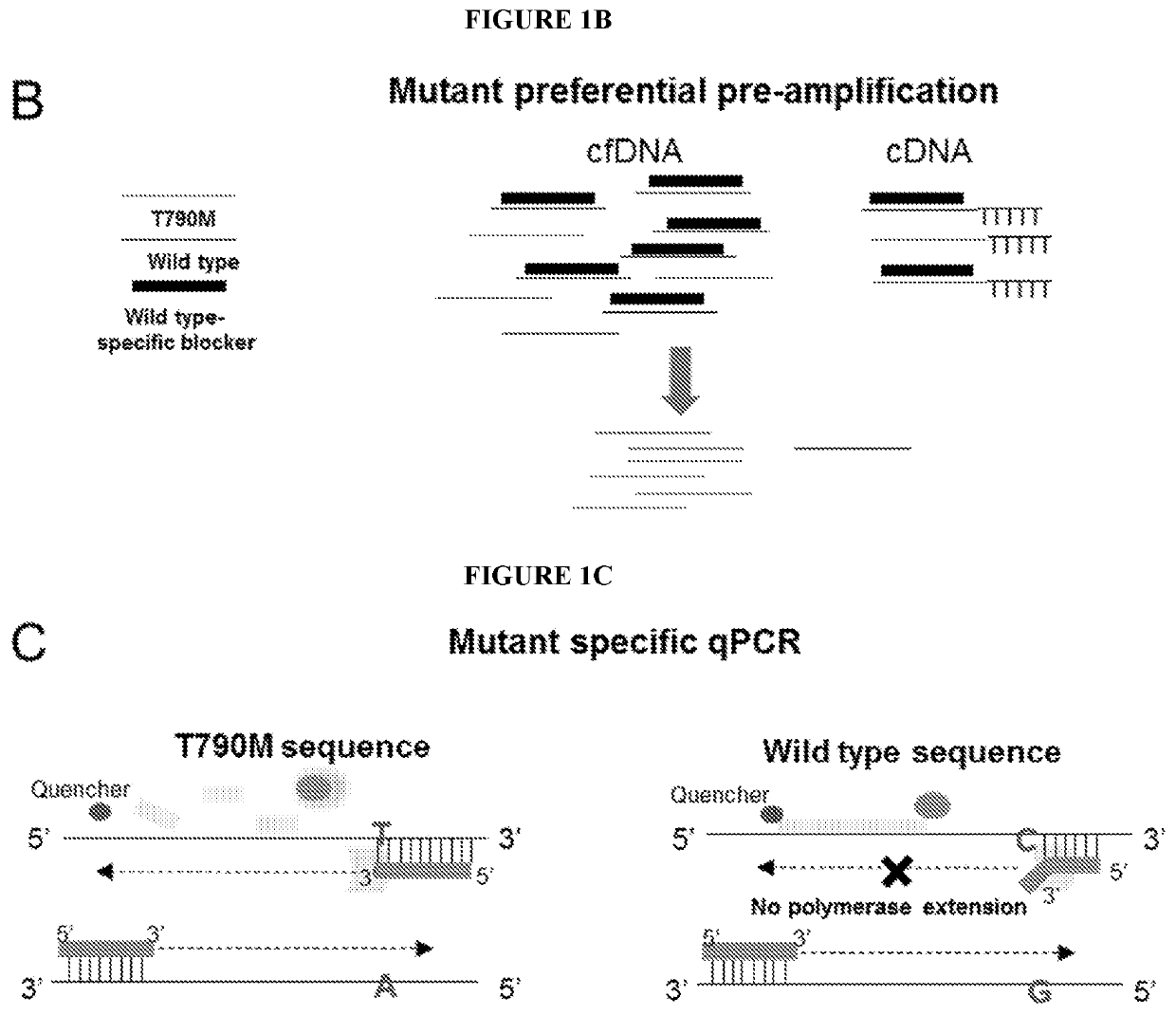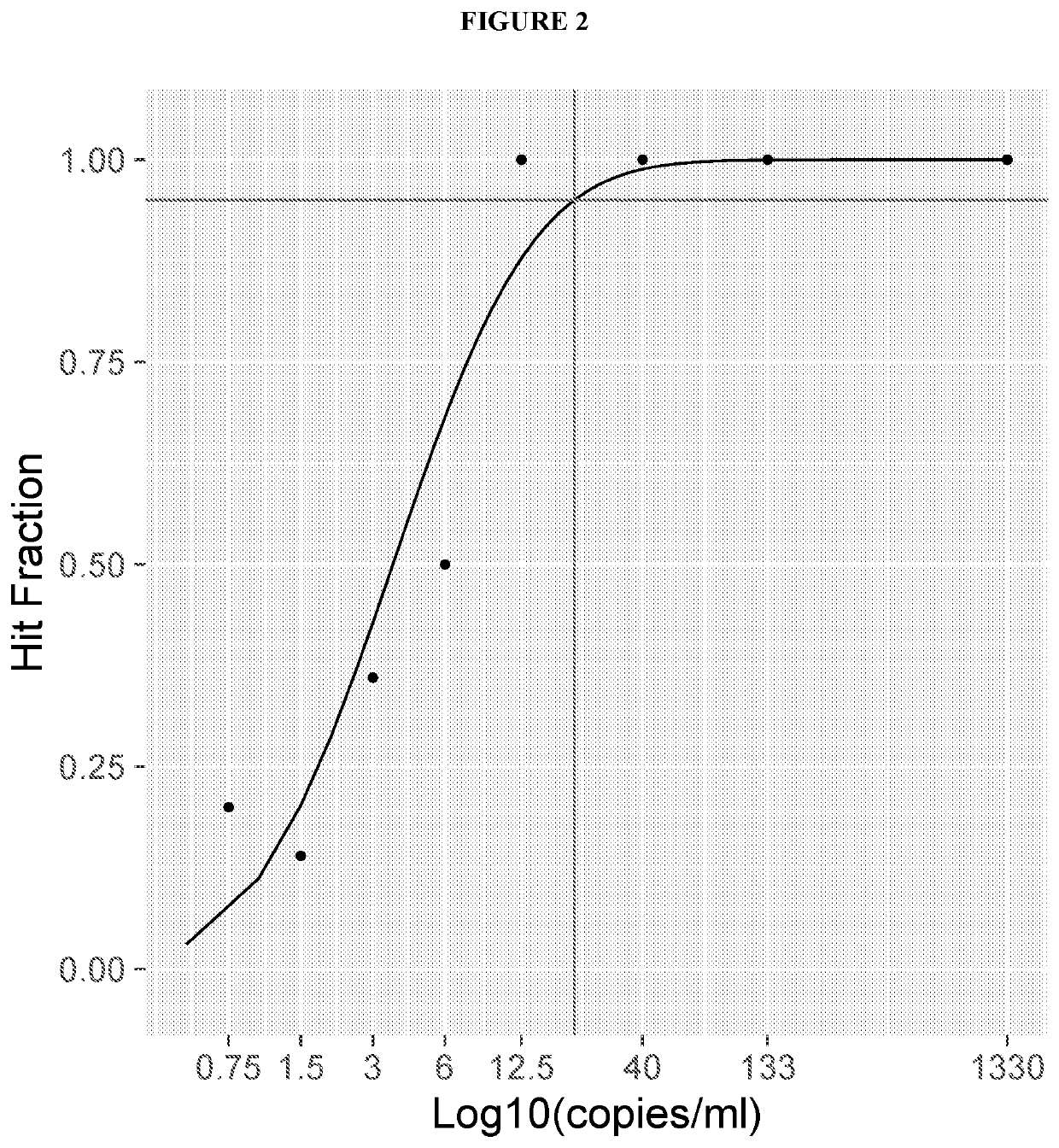Methods and compositions to detect mutations in plasma using exosomal RNA and cell free DNA from non-small cell lung cancer patients
a plasma mutation and exosomal rna technology, applied in the field of biomarker analysis, to achieve the effect of boosting the patient's own immune respons
- Summary
- Abstract
- Description
- Claims
- Application Information
AI Technical Summary
Benefits of technology
Problems solved by technology
Method used
Image
Examples
example 1
[0134]FIGS. 1A-1C are a series of illustrations of the assay workflow design and qPCR overview. FIG. 1A depicts how both extracellular NA and circulatingNA get co-isolated from plasma and reverse transcribed. At the reverse transcription step, an amplification control (DNA) and an RNA spike in control are added to ensure reverse transcription and subsequent amplifications occur (pre-amplification and multiplex qPCR). FIG. 1B depicts how multiplex pre-amplification reaction includes a wild type blocker for exon 20 of EGFR, which favors amplification of mutant molecules from circulating NA and cDNA. FIG. 1C depicts how qPCR is based on an Amplification Refractory Mutation system (ARMS).
[0135]This workflow provides a method for the detection of T790M in extracellular NA and circulating NA in biofluids from patients with NSCLC.
[0136]The assay described in this example uses the Amplification Refractory Mutation detection System (ARMS) for the qualitative and quantitat...
example 2
nt of T790M Assay
[0159]The studies described herein demonstrate the advantages of using a short amplicon and a modified nucleotide in the ARMS primer to detect and analysis highly fragmented sample material.
[0160]FIG. 4 is a graph depicting a comparison of a large versus short amplicon (with or without the base modification) to detect mutations in highly degraded DNA. Using commercially available FFPE with known % of T790M (wild type, 50%, 20%, 6.5%) and different amplicon sizes 192 bp (see e.g., Leelatian et al., “Highly sensitive EGFR mutation detection by specific amplification of mutant alleles.” Exp Mol Pathol., vol. 96(1): 85-91 (2014)) and 62 bp with and without the base modification on the primer. FIG. 4 demonstrates that 62 bp with the base modification yields the earliest Ct value.
[0161]FIGS. 5A and 5B are a series of graphs depicting a comparison of ARMS primers that include a modified nucleotide and ARMS primers that do not include a modified nucleotide. These graphs dem...
example 3
Exon 19 Deletion / Insertion Mutation Assay Workflow
[0163]The assay workflow for L858R and Exon 19 deletion / insertion mutation detection also conforms to what is disclosed in FIGS. 1A-1C. FIG. 1A depicts how both extracellular NA and circulatingNA are co-isolated from plasma and reverse transcribed. At the reverse transcription step, an amplification control (DNA) and an RNA spike in control are added to ensure reverse transcription and subsequent amplifications occur (pre-amplification and multiplex qPCR). FIG. 1B depicts how multiplex pre-amplification reaction includes a wild type blocker for corresponding wild type of L858R and exon 19 deletion and insertion mutations of EGFR, which favors amplification of mutant molecules from circulating NA and cDNA. FIG. 1C depicts how qPCR is based on an Amplification Refractory Mutation system (ARMS).
[0164]This workflow provides a method for the detection of L858R and exon 19 deletion and insertion mutations in extracellular NA and circulatin...
PUM
| Property | Measurement | Unit |
|---|---|---|
| diameter | aaaaa | aaaaa |
| diameters | aaaaa | aaaaa |
| diameter | aaaaa | aaaaa |
Abstract
Description
Claims
Application Information
 Login to View More
Login to View More - R&D
- Intellectual Property
- Life Sciences
- Materials
- Tech Scout
- Unparalleled Data Quality
- Higher Quality Content
- 60% Fewer Hallucinations
Browse by: Latest US Patents, China's latest patents, Technical Efficacy Thesaurus, Application Domain, Technology Topic, Popular Technical Reports.
© 2025 PatSnap. All rights reserved.Legal|Privacy policy|Modern Slavery Act Transparency Statement|Sitemap|About US| Contact US: help@patsnap.com



